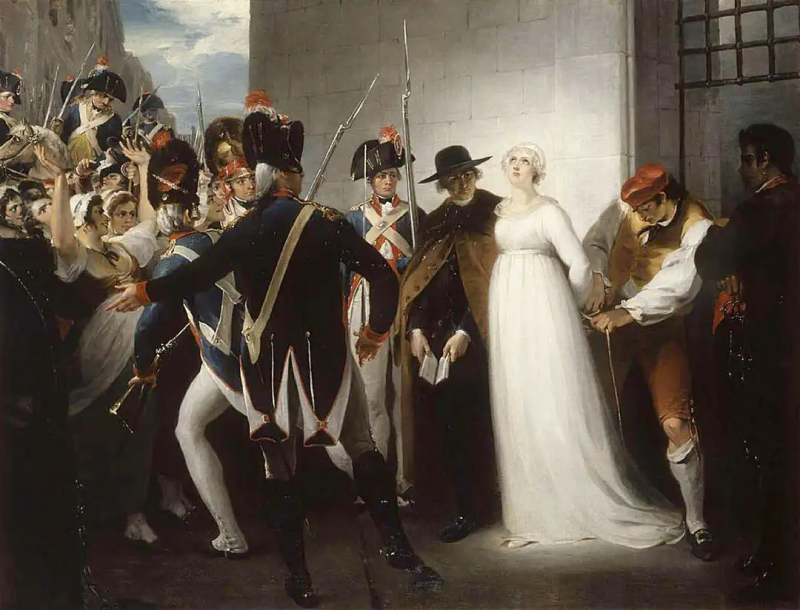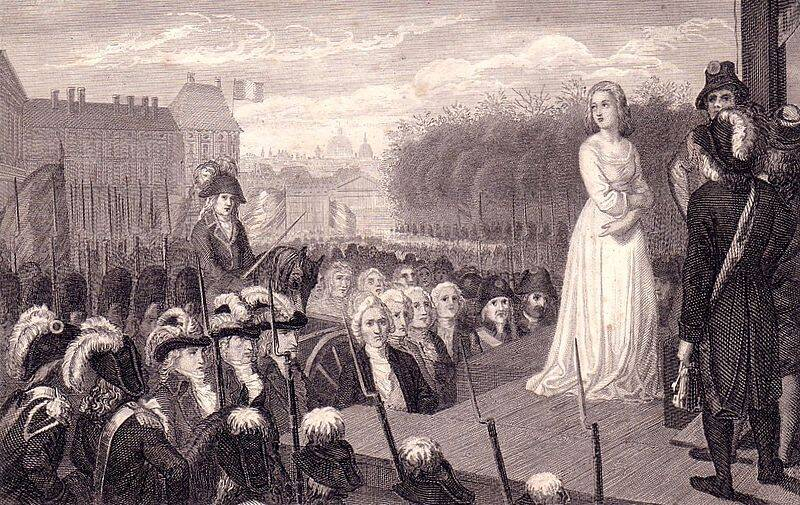Marie-Antoinette Being Taken To Her Execution
Marie-Antoinette Being Taken To Her Execution painting was displayed by William Hamilton in 1974 and was one of the most famous paintings inspired by the French revolution. Another angle on the French Revolution can be provided by an outsider. William Hamilton, a well-known British artist, felt the French Revolution to be a never-ending source of both horror and fascination. But the death of the opulent and strong queen Marie-Antoinette, who followed her executed husband after almost a year of trials, stunned him the most.
The former queen is led to her death by revolutionary soldiers in the painting, with the crown being restrained from vengeful retribution for her prior lavish lifestyle. In contrast to the men and women who are dressed in black clothing, the white-clad queen stands with a melancholy expression on her face.
The juxtaposition between the mob's wrath and Marie-dejected Antoinette's expression is maybe what makes this painting so intriguing. Despite this difference, Marie Antoinette isn't depicted in Hamilton's painting as a saint, and her guards and troops aren't necessarily the embodiment of insurmountable evil either. In a peculiar sense, Hamilton's picture depicts the forces driving the revolution.












